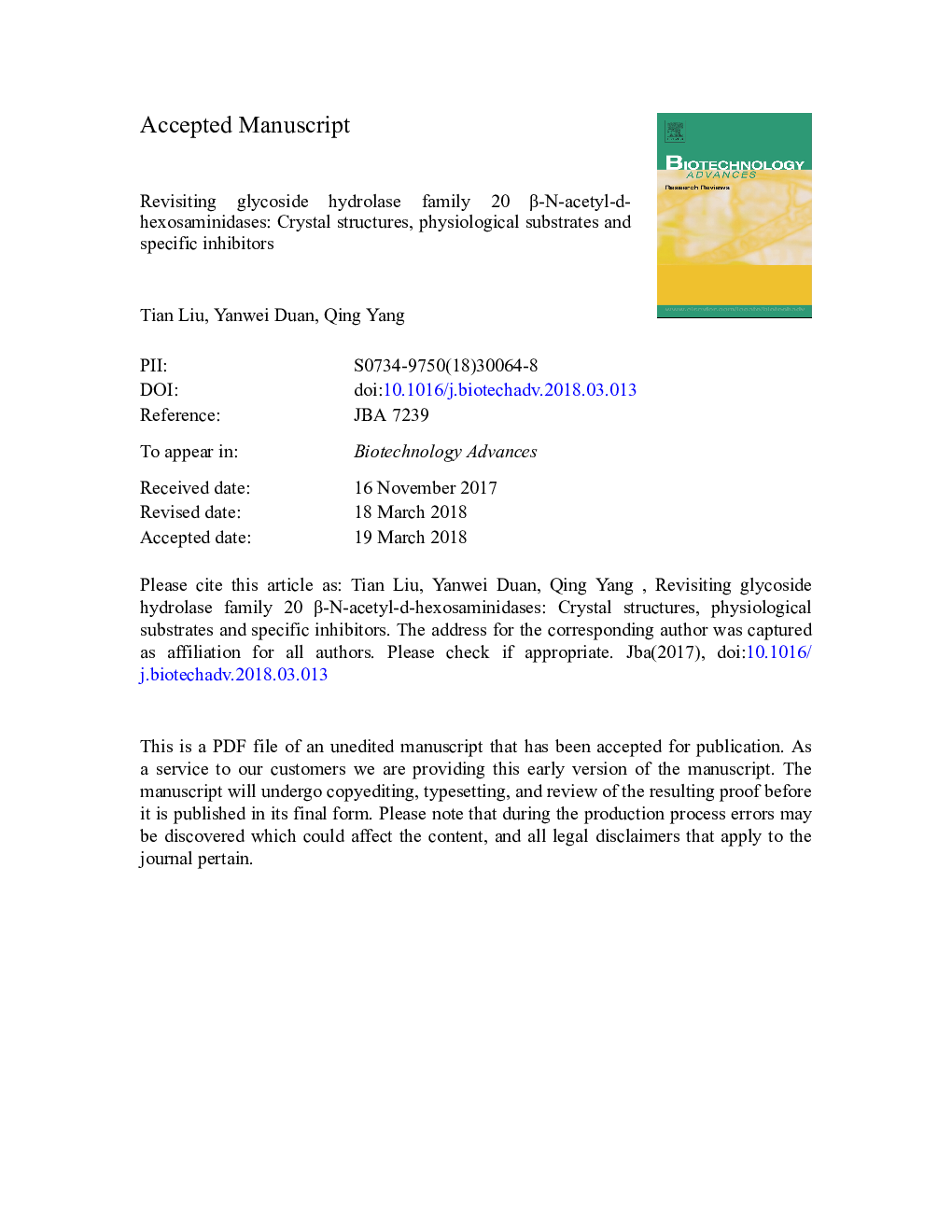| Article ID | Journal | Published Year | Pages | File Type |
|---|---|---|---|---|
| 6486593 | Biotechnology Advances | 2018 | 43 Pages |
Abstract
Glycoside hydrolase family 20 β-N-acetyl-d-hexosaminidases (GH20s) catalyze the hydrolysis of glycosidic linkages in glycans, glycoproteins and glycolipids. The diverse substrates of GH20s account for their various roles in many important bioprocesses, such as glycoprotein modification, glycoconjugate metabolism, gamete recognition and chitin degradation in fungal cell walls and arthropod exoskeletons. Defects in human GH20s cause lysosomal storage diseases, Alzheimer's disease and osteoarthritis. Similarly, lower levels of GH20s arrest arthropod molting. Although GH20s are promising targets for drug and agrochemical development, designing bioactive molecules to target one specific enzyme is challenging because GH20s share a conserved catalytic mechanism. With the development of structural biology, the last two decades have witnessed a dramatic increase in crystallographic investigations of liganded and unliganded GH20s, providing core information for rational molecular designs. This critical review summarizes recent research advances in GH20s, with a focus on their structural basis of substrate specificity as well as on inhibitor design. As more crystal structures of targeted GH20s are determined and analyzed, dynamics of their catalysis and inhibition will also be elucidated, which will facilitate the development of new drugs, pesticides and agrochemicals.
Keywords
Related Topics
Physical Sciences and Engineering
Chemical Engineering
Bioengineering
Authors
Tian Liu, Yanwei Duan, Qing Yang,
